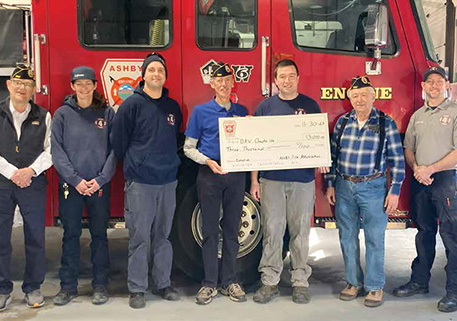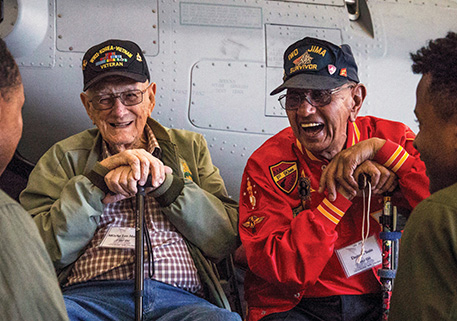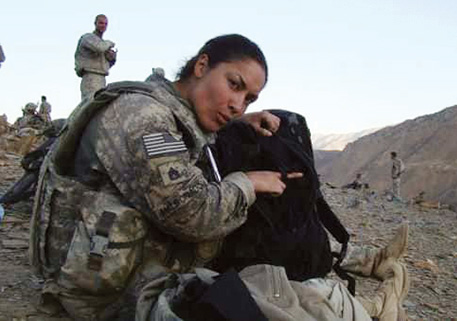Caring for older women veterans presents unique challenges, study aims to find out why
As women veterans who served in the World Wars, Korea and Vietnam eras are requiring more medical care, researchers are finding a wide discrepancy in needs between aging women veterans and nonveteran women.
Data from the Women’s Health Initiative (WHI)—a long-term study that began in 1991 and is funded by the National Institutes of Health’s National Heart, Lung, and Blood Institute—shows women veterans 80 years of age and older reported significantly lower-scale scores in perceived health, physical function, life satisfaction, social support, quality of life and purpose in life compared with nonveterans of the same age.
WHI researchers followed more than 160,000 postmenopausal women—3,700 of whom were veterans—from 40 medical centers across the United States for 20 years, collecting data on health status, disease, health behaviors, and social and psychological factors.
“The women veterans in WHI have taught us that prior military service identifies a group of women who face special challenges as they grow older,” said Dr. Andrea LaCroix, a senior investigator at the WHI Clinical Coordinating Center. “With women choosing to serve our country in greater numbers and expanded roles, including combat, it is essential to learn about their health care needs after leaving service, now and in the future.”
Why is there such a difference?
Belinda Hill, a DAV National Service Officer in New Orleans, said she sees women veterans who need medical care and benefits but who don’t have the service records to prove their health issues are service-connected.
“As an NSO, I see a lot of older women can’t get service-connection because they never went to the doctor when they were on active duty,” said Hill. “We do what we can and look hard at their records to see if there’s any way we can get them service-connected. At the very least, we direct them to resources so they can get the treatment they need.”
Hill, who spent 30 years in the Army, said it was a different time for women in the military, and she can understand why there’s such a discrepancy in the research.
“Most of the time, we didn’t get the proper care,” Hill said of her own military experience. “Going to medical was not one of the things you did if you planned on having a career in the military.”
She said if women veterans had some medical needs addressed while in the military, they would have had treatment or been more proactive before their golden years.
“We didn’t have the proper tests while we were in,” she said. “They have them now. We only got seen [at sick call] when we got sick. It could be two to three years between doctor visits.”
It’s not just physical health where women veterans seem to be at a disadvantage; it’s cognitive as well.
According to the some of the WHI research data, veteran status was associated with higher prevalence of protective factors that may have helped initially preserve cognitive functioning.
“However, findings ultimately revealed more pronounced cognitive decline among veteran relative to nonveteran participants,” according to the study. “This likely suggests the presence of risks that may impact neuropathology and the effects of which were initially masked by veterans’ greater cognitive reserve.”
DAV Assistant National Legislative Director Shurhonda Love said the research into women veterans’ health is essential to see how we can help now and prepare for future generations.
“We’ve known for a long time how different the medical needs are of women veterans compared to the general population of women,” said Love. “Now we have the data to back it up and ideally drive real change for the future of women veterans’ health care.”
In both veteran and nonveteran women, healthy survival was associated with not smoking, higher physical activity, healthy body weight and fewer depressive symptoms.






